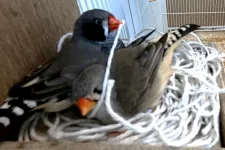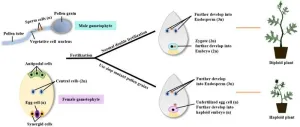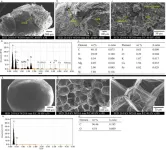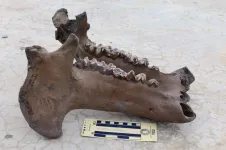(Press-News.org) Statement Highlights:
The American Heart Association supports a value-based care and payment (VBP) system that is person-centered, equitable, coordinated and seeks to improve equity, patient and provider experience, and individual and population health while controlling costs.
Defining and improving clinician understanding of value-based payment program design and best practices promotes informed decisions for participating and successfully engaging in these models.
Embargoed until 4:00 a.m. CT/5:00 a.m. ET, Monday, July 10, 2023
DALLAS, July 10, 2023 — The American Heart Association, a global force for longer, healthier lives for all, is advocating for a shift away from the current health care payment system in the U.S., which is primarily based on fee-for-service, to a value-based payment (VBP) system. A VBP system is person-centered, equitable, coordinated and seeks to improve outcomes and experiences for patients and clinicians, while controlling costs.
Health care payers, including the U.S. Centers for Medicare and Medicaid Services (CMS), major employers and health insurance companies, are increasingly adopting new payment models based on quality of care and cost of care. In the new American Heart Association policy statement, “Value-Based Payment for Clinicians Treating Cardiovascular Disease,” the Association summarizes the current landscape of VBP for cardiovascular disease clinicians and outlines recommendations for increasing its adoption. The new policy statement published today in the Association’s flagship, peer-reviewed scientific journal, Circulation.
In the traditional fee-for-service system, clinicians are paid based on the number of services provided, which does not include consideration for quality of care, patient outcomes or resource utilization. In a VBP system, improved quality and outcomes are the focus.
“Value-based care delivery and payment models hold the promise of producing better patient outcomes and lowering costs,” said Karen E. Joynt Maddox, M.D., M.P.H., FAHA, vice chair of the policy statement, a member of the American Heart Association’s Advocacy Coordinating Committee and an assistant professor of medicine at Washington University in St. Louis in St. Louis, Missouri. “Value-based programs represent an important but under-recognized opportunity to improve the clinician’s experience and the efficiency, quality and value of patient care.”
The new policy statement emphasizes the critical need to set a framework for VBP programs as they expand, prioritize equity and leverage VBP models to improve health outcomes among populations with the highest risk for chronic disease.
The policy statement’s recommendations for value-based care delivery and payment models include:
integrating person-centered process and outcomes quality metrics;
improving how clinicians are evaluated relative to cost;
embedding functional status and social risk factors into risk adjustment methodologies;
promoting flexible funding for comprehensive, team-based care and innovation;
ensuring clinicians have resources and capabilities to implement best practices; and
aligning value-based care and payment programs across public and private payers.
The statement also outlines key themes for the future of successful VBP programs and payment reform for cardiovascular care:
VBP programs must move away from the fee-for-service model toward more flexible, population-based models that allow for care delivery innovation.
VBP models should find the right balance between improving quality and reducing the cost of care, with quality improvement being the dominant construct.
Advancing health equity is central to improving quality of care. Every VBP program design must include equity measures to help avoid unintended consequences.
VBP programs should collaborate with clinicians to ensure they are adequately supported to provide high-quality care.
The recommendations are consistent with the CMS Innovation Center Strategy Refresh that was published in October 2021 to promote “a health system that achieves equitable outcomes through high quality, affordable, person-centered care.” In collaboration with the Duke-Margolis Center for Health Policy, the Association expressed support for CMS’s recommendations in a 2022 white paper addressing improving heart health through value-based payment.
American Heart Association policy statements position the Association on issues that will impact cardiovascular health and mortality, guide our advocacy work at all levels of government, allow us to support the important work of others, and inform policymakers, practitioners, health care professionals, researchers, the media and the public.
Co-authors and members of the writing group are Chair Paul Heidenreich, M.D., M.S., FAHA; Alexander T. Sandhu, M.D., M.S., Vice-Chair; William Borden, M.D., FAHA; Steven A. Farmer, M.D., Ph.D.; P. Michael Ho, M.D., Ph.D., FAHA; Gmerice Hammond, M.D., M.P.H.; Rishi K. Wadhera, M.D., M.P.P., M.Phil.; Jason H. Wasfy, M.D., M.Phil.; Cathie Biga, M.S.N.; Edwin Takahashi, M.D.; Khamal D. Misra, M.S.N.; and Janay Johnson, M.P.H. Authors’ disclosures are listed in the manuscript.
The Association receives funding primarily from individuals. Foundations and corporations (including pharmaceutical, device manufacturers and other companies) also make donations and fund specific Association programs and events. The Association has strict policies to prevent these relationships from influencing the science content. Revenues from pharmaceutical and biotech companies, device manufacturers and health insurance providers, and the Association’s overall financial information are available here.
Additional Resources:
Available multimedia is on the right column of the news release link https://newsroom.heart.org/news/policy-guidance-offers-strategies-to-shift-to-value-based-health-care-and-payment?preview=a401f228dae1f0d10ca83ec15abc1e9e
After July 10, view the manuscript online
AHA Value in Healthcare Initiative: Value in Healthcare Initiative
AHA presidential advisory: New American Heart Association health care principles call for evidence-based approaches to eliminate inequities (February 2020)
AHA policy survey report: Patient perceptions of health care value go beyond quality and cost (May 2020)
About the American Heart Association
The American Heart Association is a relentless force for a world of longer, healthier lives. We are dedicated to ensuring equitable health in all communities. Through collaboration with numerous organizations and powered by millions of volunteers, we fund innovative research, advocate for the public’s health and share lifesaving resources. The Dallas-based organization has been a leading source of health information for nearly a century. Connect with us on heart.org, Facebook, Twitter or by calling 1-800-AHA-USA1.
# # #
END
Policy guidance offers strategies to shift to value-based health care and payment
New American Heart Association policy statement advocates for improving equity, patient and clinician experience, and individual and population health through value-based care and payment models
2023-07-10
ELSE PRESS RELEASES FROM THIS DATE:
Study identifies prostate cancer–related disparities between Indigenous and non-Indigenous men in a universal health care system
2023-07-10
Indigenous Peoples in Canada have higher illness rates and lower life expectancies than non-Indigenous Canadians. A new study reveals that Indigenous men in the country who have prostate cancer are being diagnosed with more advanced and more aggressive tumors than their non-Indigenous counterparts. The findings are published by Wiley online in CANCER, a peer-reviewed journal of the American Cancer Society.
To identify disparities in prostate cancer screening, diagnoses, management, and outcomes between Indigenous and non-Indigenous men in Canada, a team led by Adam Kinnaird, MD, PhD, of the University of Alberta, ...
ERC Advanced Grant awarded to study laughing gas and its relation to climate change
2023-07-10
Ülo Mander, Professor of Physical Geography and Landscape Ecology at the University of Tartu, received the Advanced Grant from the European Research Council to study the cycle of nitrous oxide (N2O), commonly known as the laughing gas, in fens and peatlands, its links to global climate change, and possible land-use practices that could help curb the production of this greenhouse gas in the future.
Laughing gas is one of the most dangerous greenhouse gases produced by microbial life in the soils of agricultural areas and drained ...
Developer dollars not enough to save species
2023-07-10
Financial payments made by land developers to offset their impacts on threatened species may fall short, according to University of Queensland-led research.
Professor Jonathan Rhodes from the School of the Environment focused on koala populations in the fast-developing South East Queensland region and a government scheme which allows developers to make financial payments to compensate for environmental consequences.
“Just like when you make a financial contribution to offset your carbon emissions when ...
Strawberry fields forever? Strawberry production leaves long-term plastic pollution
2023-07-10
Researchers have found that the plastic mulch used to support the growth of Californian strawberries sheds large quantities of plastic mulch fragments. These particles have been shown to negatively impact soil qualities, casting doubt on the long-term viability of their use. The findings from the survey are likely to apply world-wide to plastic use in agricultural production.
Presenting their work at the Goldschmidt geochemistry conference in Lyon, postdoctoral researcher Dr Ekta Tiwari (from Sistla group at California Polytechnic ...
Beak shape can predict nest material use in the world’s birds, study finds
2023-07-10
The material a bird selects for its nest depends on the dimensions of its beak, according to researchers.
Using data on nest materials for nearly 6,000 species of birds, a team based at the University of Bristol and the University of St Andrews utilised random forest models, a type of machine learning algorithm, to take data from bird beaks and try to predict what nest materials that species might use.
They found a surprisingly strong correlation. Using only information on beak shape and size, they were able to correctly predict broad nest material use in 60% of species, rising to ...
Bees get week early wakeup call from warming climate
2023-07-10
Warmer springs are causing British bees to wake up earlier, a new study has found, threatening the pollination of crops such as apples and pears.
The research – which is believed to be the largest of its kind in Great Britain – found that for every 1 degree Celsius rise in temperature caused by climate change, wild bees, such as bumblebees, emerge from their nests 6.5 days earlier on average.
As spring starts earlier and bees emerge closer to the start of the year, they may lose sync with the plants on which ...
Man-made materials in nests can bring both risks and benefit for birds
2023-07-10
We all discard a huge amount of plastic and other man-made materials into the environment, and these are often picked up by birds. New research has shown that 176 bird species around the world are now known to include a wide range of anthropogenic materials in their nests. All over the world, birds are using our left-over or discarded materials. Seabirds in Australia incorporate fishing nets into their nests, ospreys in North America include baler twine, birds living in cities in South America add ...
Li Yuan 's group from Northwest A&F University has made progress in the study of watermelon haploid induction
2023-07-08
Generating haploid plants for the purpose of obtaining pure doubled haploid (DH) lines is widely recognized as one of the most efficient breeding strategies in modern agriculture. Watermelon (Citrullus lanatus), an important fruit crop known for its nutritional value and flavor, has undergone long-term artificial selection resulting in genetic narrowing. Therefore, there is an urgent need for a haploid induction system to enhance traditional breeding methods and facilitate the development of valuable pure DH lines.
In March 2023, the Plant Biotechnology Journal published an online paper titled "Production of double haploid watermelon via ...
From bad to worse: h=How micro- and meso-plastics collect heavy metals
2023-07-08
Tokyo, Japan – A team led by researchers from Tokyo Metropolitan University studied how microplastics in the environment accumulate heavy metals. As the microplastics spread, so do their toxic cargo. Focusing on polystyrene foam, they collected particles along a river running through Ulaanbaatar, Mongolia. They found significant levels of heavy metals accumulated on the particles, reflecting local land use and industries, as well as surface features like holes and biofilms which help pollutants collect.
The spread of plastic debris into the natural environment is an ecological disaster. As plastic waste makes ...
Madagascar hippos were forest dwellers
2023-07-07
Extinct dwarf hippos that once roamed Madagascar lived in forests rather than open grasslands preferred by common hippos on mainland Africa, researchers at the University of Cincinnati discovered.
The findings suggest grasslands that now cover much of the enormous island off the eastern coast of southern Africa were a relatively recent change facilitated by people rather than a natural habitat sustained in part by these famously large vegetarians.
The study was published in the journal Plants, People, Planet.
When Madagascar broke away from Africa’s mainland 150 million years ago, its plants and animals evolved in geographic isolation in the ...
LAST 30 PRESS RELEASES:
Heart-brain connection: international study reveals the role of the vagus nerve in keeping the heart young
Researchers identify Rb1 as a predictive biomarker for a new therapeutic strategy in some breast cancers
Survey reveals ethical gaps slowing AI adoption in pediatric surgery
Stimulant ADHD medications work differently than thought
AI overestimates how smart people are, according to HSE economists
HSE researchers create genome-wide map of quadruplexes
Scientists boost cell "powerhouses" to burn more calories
Automatic label checking: The missing step in making reliable medical AI
Low daily alcohol intake linked to 50% heightened mouth cancer risk in India
American Meteorological Society announces Rick Spinrad as 2026 President-Elect
Biomass-based carbon capture spotlighted in newly released global climate webinar recording
Illuminating invisible nano pollutants: advanced bioimaging tracks the full journey of emerging nanoscale contaminants in living systems
How does age affect recovery from spinal cord injury?
Novel AI tool offers prognosis for patients with head and neck cancer
Fathers’ microplastic exposure tied to their children’s metabolic problems
Research validates laboratory model for studying high-grade serous ovarian cancer
SIR 2026 delivers transformative breakthroughs in minimally invasive medicine to improve patient care
Stem Cell Reports most downloaded papers of 2025 highlight the breadth and impact of stem cell research
Oxford-led study estimates NHS spends around 3% of its primary and secondary care budget on the health impacts of heat and cold in England
A researcher’s long quest leads to a smart composite breakthrough
Urban wild bees act as “microbial sensors” of city health.
New study finds where you live affects recovery after a hip fracture
Forecasting the impact of fully automated vehicle adoption on US road traffic injuries
Alcohol-related hospitalizations from 2016 to 2022
Semaglutide and hospitalizations in patients with obesity and established cardiovascular disease
Researchers ‘listen in’ to embryo-mother interactions during implantation using a culture system replicating the womb lining
How changing your diet could help save the world
How to make AI truly scalable and reliable for real-time traffic assignment?
Beyond fragmented markets: A new framework for efficient and stable ride-pooling
Can shape priors make road perception more reliable for autonomous driving?
[Press-News.org] Policy guidance offers strategies to shift to value-based health care and paymentNew American Heart Association policy statement advocates for improving equity, patient and clinician experience, and individual and population health through value-based care and payment models







